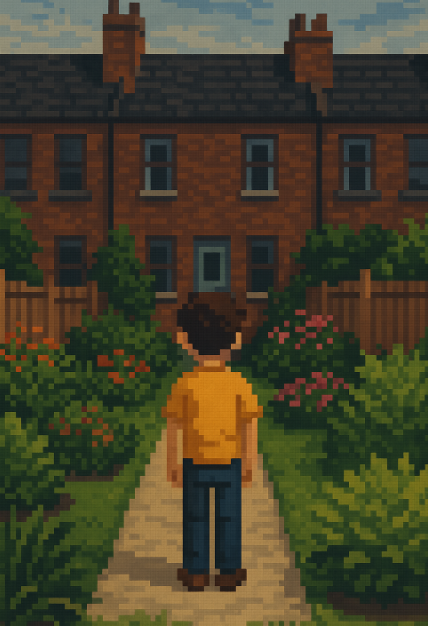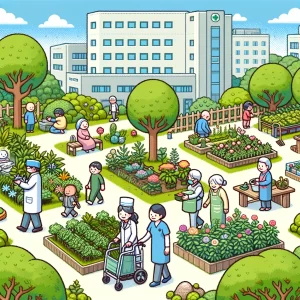
What Happens When We Misdefine Nature in Health Research?
You’ve heard it before: “Go outside, it’s good for your health.” But what if the science behind that advice is built on a vague, inconsistent idea of what “nature” actually means?
Is it a forest trail or a backyard garden? A potted plant or a national park? According to new research from a European team of ecologists and health scientists, this ambiguity is more than academic—it could be weakening our ability to harness nature’s real power to improve human health.
The study reveals something simple but transformative: not all “nature” is created equal—and neither are the ways it impacts mental and physical health. To unlock the full benefits, we need to think in scales.
The Problem: Nature Without Definition
Public health professionals love citing studies about the mental health perks of green spaces. But as the new paper highlights, most of those studies lump wildly different types of nature—trees, parks, farms, landscapes—under the same vague label. That’s like studying “food” without distinguishing between broccoli and brownies.
Using data from over 300 studies, the researchers mapped how “greenspace” and “mental health” are being studied across three key ecological scales:
- Species and individuals (e.g., pets, plants)
- Ecosystems and land-use types (e.g., gardens, forests, farms)
- Landscapes (e.g., wilderness areas, urban-rural mosaics)
Surprisingly, most research focuses on ecosystems—like forest bathing or community gardens—while few studies zero in on individual species or full landscapes. Even more concerning, many papers never define the scale of nature they’re studying at all.
Why Scale Matters More Than You Think
Let’s say a hospital is trying to reduce patient stress with a “nature-based intervention.” If they base their program on studies about national parks but only have a courtyard garden, they might be disappointed in the results. The scale doesn’t match.
Or imagine a school installing a wall of greenery because of studies on “greenspace,” when the original research was based on forest immersion. The mismatch in scale may mean the health benefits don’t translate.
Without specifying the scale, interventions can miss the mark—and funding might flow to programs with little grounding in the actual evidence.
Real-Life Examples by Scale
Here’s how nature at each scale plays out in real-world settings:
- Species Level: Therapy dogs, horticultural therapy, even watching birds. These interactions are direct, personal, and often emotional. Think: petting a horse during recovery or tending to a single tomato plant.
- Ecosystem Level: Healing gardens, urban farms, forest walks. These spaces support both passive enjoyment and active participation, like gardening programs in long-term care facilities.
- Landscape Level: National parks, nature preserves, and expansive urban-rural blends. These settings involve complex interactions between people, land use, and social meaning—like how time in the wilderness might boost resilience or awe.
Different scales can tap into different psychological pathways: connection, restoration, stimulation, or even a sense of meaning. That’s why a clearer taxonomy matters.
Why Public Health Should Care
As climate change, urbanization, and mental health challenges intensify, the pressure is on to design smarter, evidence-based interventions. Nature-based therapies, green prescriptions, and urban planning all depend on reliable science.
But right now, many studies are hard to compare or synthesize because they use the same words (“nature,” “green,” “exposure”) for completely different things.
This is more than a methodological gripe. It’s about equity and effectiveness. If some communities get rooftop plants and others get full park access—based on vague definitions—who really benefits?
What Needs to Change
The authors make several recommendations that public health professionals and researchers can act on now:
- Always define the scale of nature. Is it a species, ecosystem, or landscape? Spell it out.
- Match interventions to evidence. Don’t build a “forest therapy” program using research from potted plants.
- Push for interdisciplinary standards. Ecologists, doctors, and urban planners all need a shared language about what “nature” means in their work.
- Use multiple measurement tools. Different scales require different methods—GIS for landscapes, self-reports for gardens, biometrics for animal-assisted therapy.
What’s Next for Research?
This study lays a foundation for a new generation of more precise, actionable, and comparable nature-health research. One exciting direction? Building a centralized database of nature-based interventions, categorized by scale and health outcomes.
Also needed: More attention to under-studied scales, like individual species, which offer low-cost and high-access interventions—think pet therapy in schools or home gardening for stress.
And let’s not forget the landscapes. As cities expand and climate pressures grow, understanding how whole ecosystems and regions shape our well-being will be vital.
Join the Conversation
What kind of “nature” have you found most healing in your own life—plants, parks, or wilderness?
Do you think public health policies are keeping pace with the complexity of nature’s influence?
How could your community better match natural spaces to people’s real needs?
Let us know in the comments or tag us in your reflections. The more we define nature clearly, the more clearly we’ll see its power to heal.
Time is Running Out – Act Now for Public Health!
Access trusted insights that help you lead change in your community. Subscribe now for your free weekly update on public health’s most pressing issues.
🔥 Your action matters! Share this blog right now and help grow our network of changemakers.



